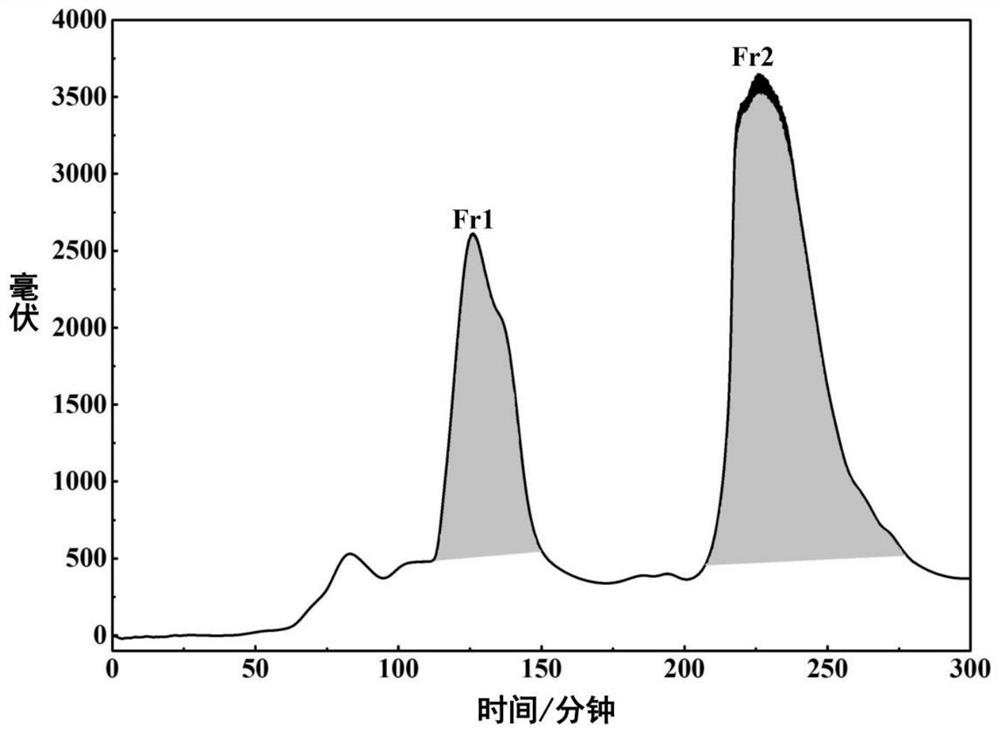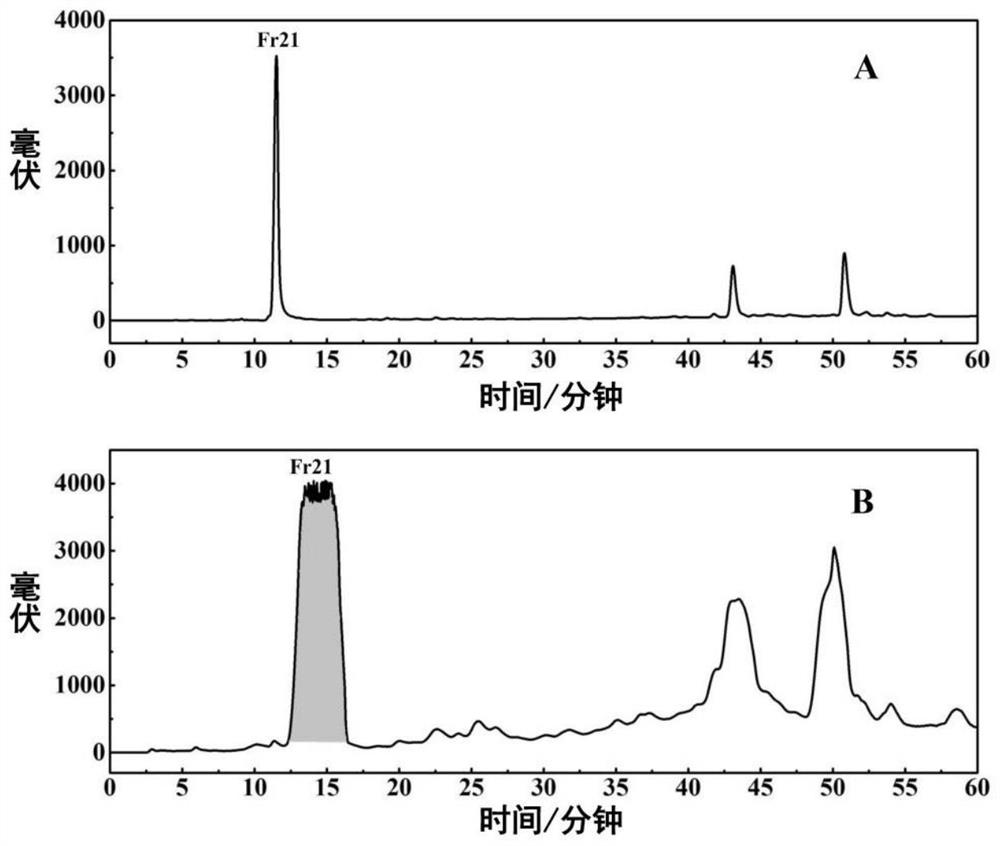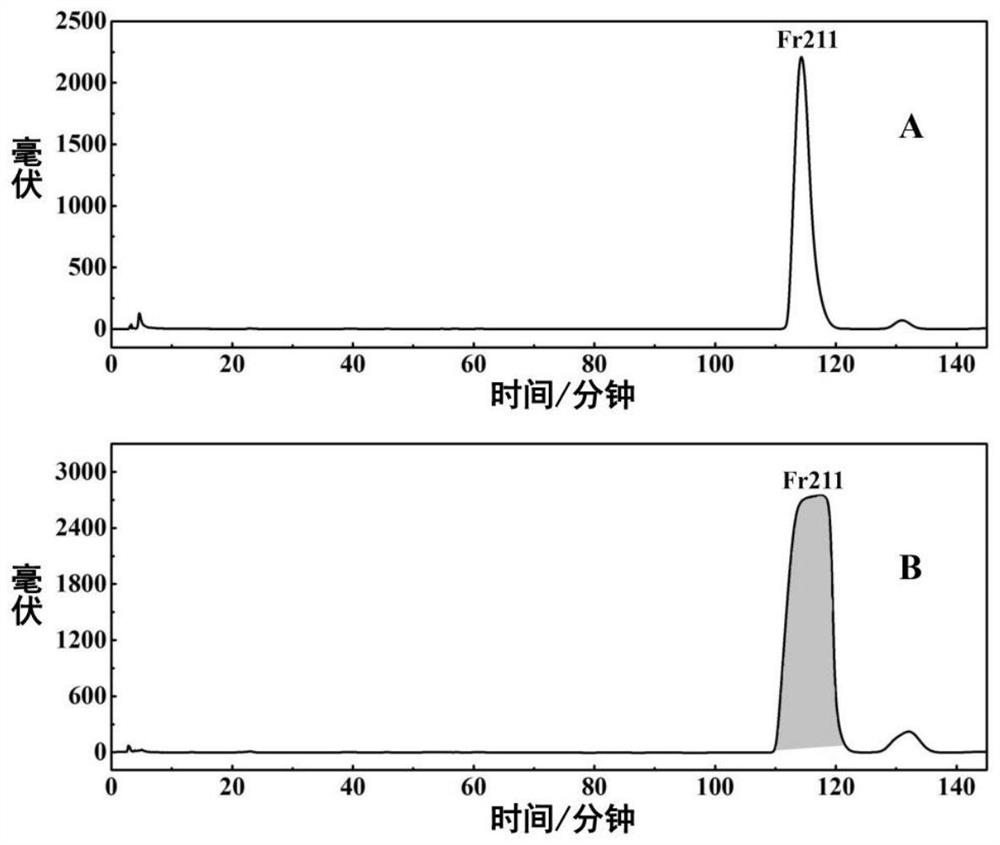Separation and preparation method of lignan derivatives in thuja arborvitae
A technology for lignans and derivatives, applied in the field of natural medicinal chemistry, can solve the problems of complex separation methods, unsuitable for large-scale preparation, etc., and achieve the effects of high product purity, suitable for large-scale production, and low requirements for raw materials
- Summary
- Abstract
- Description
- Claims
- Application Information
AI Technical Summary
Problems solved by technology
Method used
Image
Examples
Embodiment 1
[0030] A method for separating and preparing lignan derivatives (7E)-7,8-Dehydroheliobuphthalmin from cypress arborvitae, the method specifically comprising the following steps:
[0031] Step 1, extraction: take 550g of Arborvitae branches and dry them in the shade, add n-hexane with 10 times its mass after crushing, percolate and extract 3 times at room temperature, each time for 10 h, percolate and combine the filtrates, i.e. filtrate A, filtrate A. Drying under reduced pressure, that is, 60 mL of the crude extract of Arborvitae branches, wherein the conditions for drying under reduced pressure are a vacuum degree of 100 mbar and a temperature of 40 °C;
[0032] Step 2, microporous resin enrichment: 30 mL of the crude extract of Arborvitae branches was taken, the sample was separated by a medium-pressure chromatographic column equipped with microporous resin, detected by an ultraviolet detector with a detection wavelength of 210 nm, and collected to prepare a chromatogram Th...
Embodiment 2
[0036] A method for separating and preparing lignan derivatives (7E)-7,8-Dehydroheliobuphthalmin from cypress arborvitae, the method specifically comprising the following steps:
[0037] Step 1, extraction: take 200g of Arborvitae branches, dry in the shade, add n-hexane with 10 times its mass after crushing, percolate and extract 3 times at room temperature, each time for 10 h, percolate and combine the filtrates, i.e. filtrate A, filtrate A. Drying under reduced pressure, that is, 21 mL of the crude extract of Arborvitae branches, wherein the conditions for drying under reduced pressure are a vacuum degree of 150 mbar and a temperature of 45°C;
[0038] Step 2, microporous resin enrichment: take 21mL of the crude extract of Arborvitae branches, separate the sample through a medium-pressure chromatographic column equipped with microporous resin, detect it with an ultraviolet detector with a detection wavelength of 210 nm, and collect and prepare a chromatogram The second main...
Embodiment 3
[0042] A method for separating and preparing lignan derivatives (7E)-7,8-Dehydroheliobuphthalmin from cypress arborvitae, the method specifically comprising the following steps:
[0043] Step 1, extraction: take 1000 g of Arborvitae branches and dry in the shade, add n-hexane with 10 times its mass after crushing, extract by percolation at room temperature for 3 times, each time for 12 h, percolate and combine the filtrates, i.e. filtrate A, The filtrate A was dried under reduced pressure, that is, 110 mL of the crude extract of Arborvitae twigs, wherein the conditions for drying under reduced pressure were a vacuum degree of 250 mbar and a temperature of 50°C;
[0044] Step 2, microporous resin column enrichment: take 60 mL of the crude extract of Arborvitae twigs, separate the sample through a medium-pressure chromatographic column equipped with a microporous resin, detect it with an ultraviolet detector with a detection wavelength of 210 nm, collect and prepare The second m...
PUM
 Login to View More
Login to View More Abstract
Description
Claims
Application Information
 Login to View More
Login to View More - R&D
- Intellectual Property
- Life Sciences
- Materials
- Tech Scout
- Unparalleled Data Quality
- Higher Quality Content
- 60% Fewer Hallucinations
Browse by: Latest US Patents, China's latest patents, Technical Efficacy Thesaurus, Application Domain, Technology Topic, Popular Technical Reports.
© 2025 PatSnap. All rights reserved.Legal|Privacy policy|Modern Slavery Act Transparency Statement|Sitemap|About US| Contact US: help@patsnap.com



